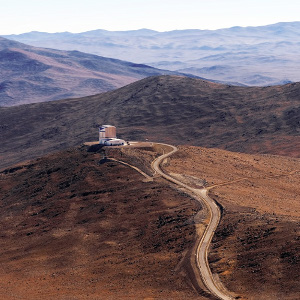 This view of the reddish, Mars-like landscape of the Atacama Desert around the Visible and Infrared Survey Telescope for Astronomy (VISTA), was taken from the neighbouring Cerro Paranal, home of ESO’s Very Large Telescope (VLT). Credit: ESO/José Francisco Salgado (josefrancisco.org)
This view of the reddish, Mars-like landscape of the Atacama Desert around the Visible and Infrared Survey Telescope for Astronomy (VISTA), was taken from the neighbouring Cerro Paranal, home of ESO’s Very Large Telescope (VLT). Credit: ESO/José Francisco Salgado (josefrancisco.org)
„European Digital Art and Science Network“ is the title of the just launched initiative by Ars Electronica, which aims to combine scientific topics with creative and innovative approaches to digital art. In cooperation with seven European partners organizations (see later), Ars Electronica issues a world-wide call for submissions. From among the entries, a jury of top-name experts will select two artists to take part in a residency at the European Southern Observatory (ESO) in Chile, where they’ll work on developing artistically innovative explanatory models for complex themes raised by modern science.
The artists will spend a few weeks at the scientific institution and derive inspiration from their mentors and their scientific work. Subsequently, they’ll spend an additional residency at the Ars Electronica Futurelab, where mentors will assist the artists in the creation and development of new works that were inspired by their previous residency at ESO.
The results of the residencies will be presented at the Ars Electronica Festival and in modular traveling exhibitions that will be running at the seven partner institutions. In addition to the exhibitions, the network will also stage workshops and discursive projects such as conferences and symposia having to do with the artistic themes of the respective works.
We recently had a chance to talk with Martin Honzik, director of Ars Electronica’s Festival, Prix and Exhibitions divisions, and Claudia Schnugg, who’s in charge of the Ars Electronica Residency Network to get to know more about the European Digital Art and Science Network.
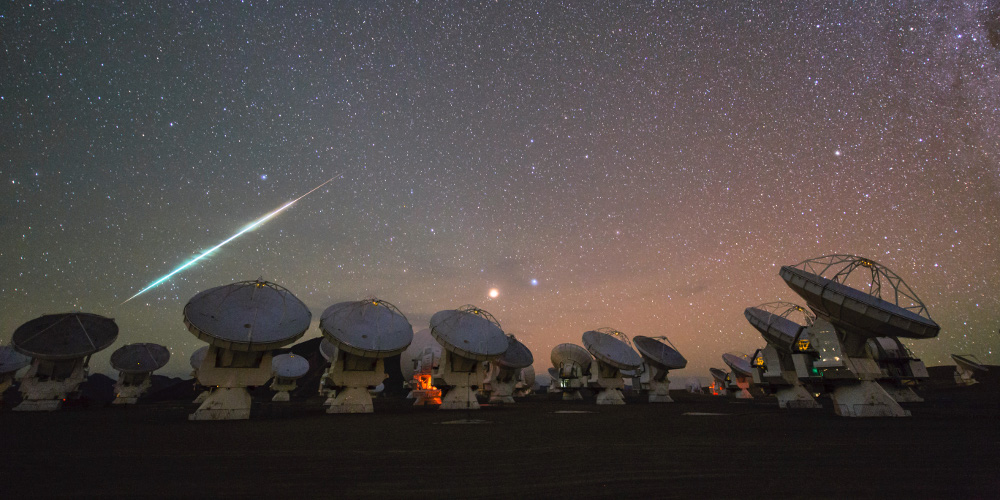 This beautiful image was taken during a time-lapse set at the Atacama Large Millimeter/submillimeter Array (ALMA). Credit: ESO/C. Malin
This beautiful image was taken during a time-lapse set at the Atacama Large Millimeter/submillimeter Array (ALMA). Credit: ESO/C. Malin
Hello Martin, hello Claudia! What exactly is the mission of the European Digital Art and Science Network?
Martin Honzik: This project’s aim is to consider art, technology and science on the same level, and to bring about a process of exchange among them. We’ve brought together several European cultural partners that are positioned in various different ways, namely the Center for the Promotion of Science in Serbia, the DIG Gallery in Slovakia, the Zaragoza City of Knowledge Foundation, LABoral in Spain, the Galerija Kapelica in Slovenia, GV Art in England and the Science Gallery in Ireland. And with ESO as scientific partner that is at the forefront of basic research we think we will stage a great project.
We’re issuing an international call for applications from artists who are interested in taking part in a residency at the ESO. After that, the next step takes place on the premises of the Ars Electronica Futurelab: taking the findings that have emerged during the respective artist’s stay at the scientific facility and putting them into a form of presentation, a form in which other people can behold them. We seek artists who can undauntedly confront complex topics in basic scientific research and incisively, meaningfully reflect on them. The objective as we envision it is a mutually fruitful encounter of science and art, of scientists and artists.
Claudia Schnugg: The point is that residencies create an opportunity for the artists staying at ESO to encounter scientists and their scientific theories and approaches, and to derive inspiration from them for works of art that they subsequently bring to fruition in the context of a residency at the Ars Electronica Futurelab.
What I find especially interesting about this is the very strongly scientific nature of the encounter. The question that arises is: How can scientists work together with artists and jointly develop something new. That is to say: on the scientific side, to get inspired by scientific processes and scientific theories. Conversely, this should also be considered from the opposite perspective—that scientists also benefit from working together with artists. Actually, both disciplines pose the same questions; they just have different ways of looking at them. That’s why curiosity and creativity are called for on both sides.
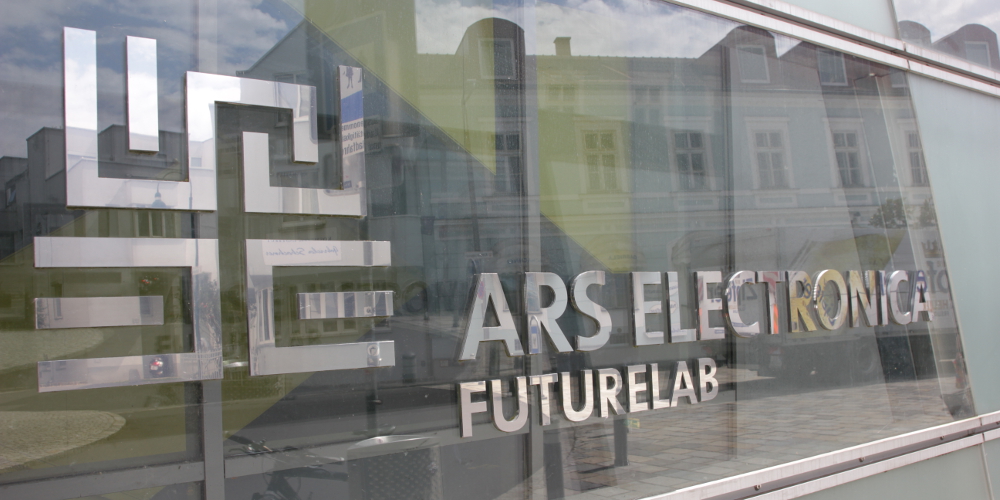 What are your expectations from this collaboration with ESO?
What are your expectations from this collaboration with ESO?
Martin Honzik: We don’t want to take an approach to art and science that’s simply cliché-ridden. We want to really go about this seriously. And the first step in this direction was to select one of the best science partners, and I think we’ve succeeded in doing that. At the ESO, we’ve been welcomed with open arms. The facility’s director told me that he noticed a sustainable effect every time an artist paid a visit to the institution. Whereby what he meant was the effect of the inspiration imparted by the artists to the scientists, who are thus made aware of the extraordinary nature of their everyday situation. Basically speaking, artistic work seeks alternatives, or calls conventional approaches into question. In light of this background, the attitude of an artist is certainly very life-affirming in the everyday life of a scientist.
Claudia Schnugg: It would be wonderful if the participating artists would really get into the world of ESO in an effort to jointly bring about something that’s totally novel. What I’d like to see is artists not only deriving inspiration but actually working together with the scientists they encounter.
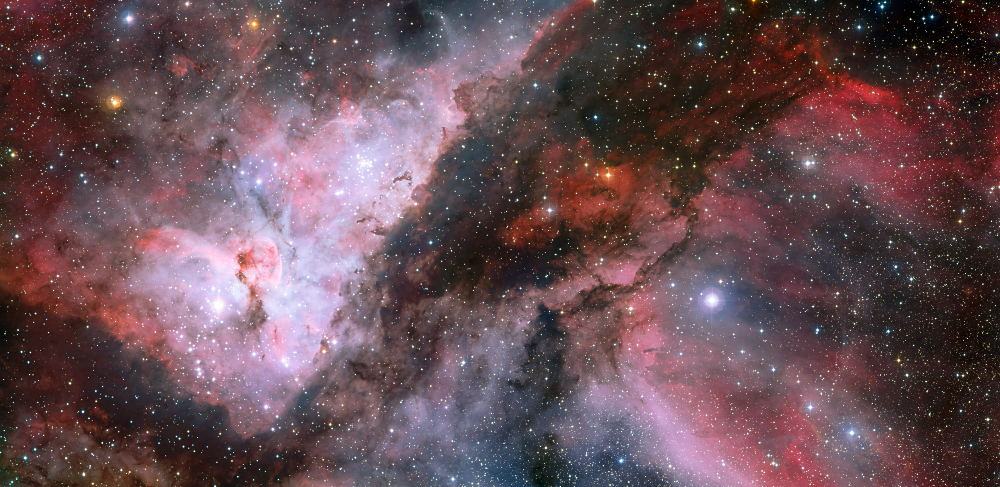 This spectacular panoramic view combines a new image of the field around the Wolf–Rayet star WR 22 in the Carina Nebula (right) with an earlier picture of the region around the unique star Eta Carinae in the heart of the nebula (left). The picture was created from images taken with the Wide Field Imager on the MPG/ESO 2.2-metre telescope at ESO’s La Silla Observatory in Chile. Credit: ESO
This spectacular panoramic view combines a new image of the field around the Wolf–Rayet star WR 22 in the Carina Nebula (right) with an earlier picture of the region around the unique star Eta Carinae in the heart of the nebula (left). The picture was created from images taken with the Wide Field Imager on the MPG/ESO 2.2-metre telescope at ESO’s La Silla Observatory in Chile. Credit: ESO
How can such a collaborative arrangement function?
Martin Honzik: There are no prescribed methods. If there were a pill to make this happen, then we wouldn’t need to run this experiment. What’s extremely important is asserting a claim to excellence in particular respects. Of course is it difficult to even understand what the ESO staff was attempting to accomplish. But you have to be persistent and make a commitment to creating something that’s more than just decorative. You have to want to peer beneath the surface, to really know what you’re doing, and to constantly be reflecting upon the situation of the context one is in at the moment. This quality is a definitive essence of an artistic personality. On the other hand, it’s the case that scientists do not normally make a concerted effort to get involved in an exotic encounter with individuals who are totally different types of people. They too want to be taken seriously in connection with what they do.
Accordingly, a big part of this project is the selection of the artist. Before they’re approved to commence the residency, they must already have engaged in extensive contact with the scientists involved. They want to brief the artists in advance, they want to determine the degree of seriousness of the submitted projects and the individuals who are involved in them, and they want to see in what direction this whole endeavor is headed. Then, the form of expression is the job of the artist alone.
If these two preconditions are satisfied—that both sides meet on eye level, and that we bring together the right people—then it’s definitely the case that both sides can profit from one another. Art can make abstract science understandable; it can put it into terms people comprehend. Here, art can once again successfully demonstrate the role it’s capable of playing in society—namely, explaining to us our world and the relevance of the things that take place around us, and endowing us with a critical attitude towards the things that surround us.
 A phenomenon known as a syzygy — when three celestial bodies (or more) nearly align themselves in the sky. Credit: Y. Beletsky (LCO)/ESO
A phenomenon known as a syzygy — when three celestial bodies (or more) nearly align themselves in the sky. Credit: Y. Beletsky (LCO)/ESO
Who can/ may/ should respond to the call for applications?
Martin Honzik: Basically anyone. Of course, we’d also like to reach out via the Prix Ars Electronica network so we can approach the media art scene we’re connected with. And each of the other partners has its own regional, national and international network, so they’ll be propagating this call too. Basically, we’re really looking forward to seeing who’s ready to get involved. It’s the case that the term “Europe” in the title makes an interesting definition of who can participate and who can’t. As far as I’m concerned, I’d be pleased to receive applications from all over the world – that is, when what’s happening here in Europe motivates and inspires the whole world. In any case, there are no national differences on the substantive level, regardless of whether it’s art or science. That’s extremely interesting to consider.
Claudia Schnugg: Of course, the open call goes out to all media artists. But what I personally would find really fascinating would be to receive applications from other artists who don’t necessarily or normally work in new media – so that these artists could launch, on one hand, a dialog between their artistic interests and the scientific partner, and, on the other hand, a dialog with media art and modes of dealing with new media and new technologies. I think it could turn into a very interesting field of tension and interplay if someone who doesn’t yet have so much experience with media art could enter into a dialog with ESO as well as the Ars Electronica Futurelab. At the same time, of course, it would be very exciting if someone who has a great deal of experience in this genre would propose a way of taking this approach to the next level and creating something brand new.
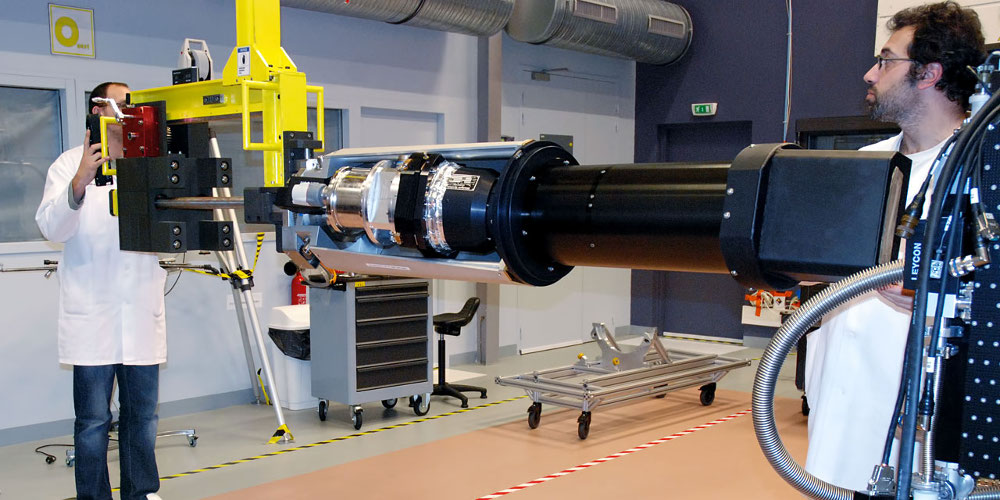 This is the insertion of a integral field unit (IFU) into the Multi Unit Spectroscopic Explorer (MUSE) main structure. Credit: ESO
This is the insertion of a integral field unit (IFU) into the Multi Unit Spectroscopic Explorer (MUSE) main structure. Credit: ESO
According to which criteria will the artists be selected?
Martin Honzik: The prime consideration is the quality of the project. We don’t want to waste the time that our scientific partner have given us. We will convene a jury made up of the ESO representative, Fernando Comeron, and also of representatives of the partner institutions. Then they’ll get in touch with the artists who submitted a project to find out which direction the artist is looking to go with it. The jury will then select two projects and send the artists to Chile.
After that, the residency in the Ars Electronica Futurelab begins …
Martin Honzik: Exactly. The next step is to process these experience and to reflect about what transpired at ESO. That will be put into a presentation form at the Ars Electronica Futurelab. It’s important to mention that the outcome doesn’t necessarily have to be a media art installation. Literature, for example, is also art. It could be anything. So, as far as the results are concerned, we want to keep it as open as possible.
Claudia Schnugg: I think it’s great that the Ars Electronica Futurelab isn’t regarded solely as a production site for the residencies, but rather as the source of a second substantive impetus. The idea that originated at ESO won’t just be implemented here; each artist will develop his/her planned project together with members of the Ars Electronica Futurelab staff, who will make their skills and knowhow available to this collaborative production process.
 The VISTA telescope in its dome. Credit: ESO
The VISTA telescope in its dome. Credit: ESO
And finally there’ll also be an exhibition showcasing the finished projects …
Martin Honzik: Right. We plan to stage the premiere in conjunction with the Ars Electronica Festival. Plus, Ars Electronica will curate an exhibition featuring the artistic outcomes of the residencies, and also present the themes the artists dealt with in an exhibition context installed in an expanded associative space. But we don’t want to get too specific in predetermining what comes out of this. We’ll be working together with the scientists to filter out focal-point themes addressed in these projects and then, for the Ars Electronica Festival, we’ll curate an associative art exhibition that expands on these themes and goes into them more deeply.
How will the cultural partners be integrated into this effort?
Claudia Schnugg: In addition to Ars Electronica, this project involves seven cultural partners, who will then be entitled to use the results of the residencies. So, the results are two works of art while they’re at the Ars Electronica Futurelab and these works will premiere at an exhibition at the Ars Electronica Festival before going on tour. But the partner institutions won’t necessarily be displaying the same configuration that was shown at the Ars Electronica Festival. They can take what meets their needs – mix and match, so to speak.
Martin Honzik: It’s important to us that each one of our cultural partners brings to the table its own distinctive regional relevance, its own particular local dialect, as it were. Here, I’m proceeding under the assumption that, despite the fact that we’re all active in the field of media art, each partner has to deal with its own facts and circumstances and react to its own framework situation. Each cultural partner has its own network of local artists who are motivated by these institutions to make a contribution to the associative space of the respective exhibition. Naturally, we’ll also be integrating Ars Electronica’s network into this associative exhibition space, so each partner should, in turn, have the opportunity to bring its own standpoint to bear, to input its own takes on things, and to get its own network involved. What will always remain the same are the two results of the residencies. These results will be available to each individual partner for a certain period of time, and each will curate an exhibition of varying dimensions centered on the residency results. The intention inherent in this is to thereby engender a worldview, an explanatory picture. Of course, in going about this, multiple approaches are possible in facilitating audiences’ efforts to experience and understand the outcomes of the residencies.
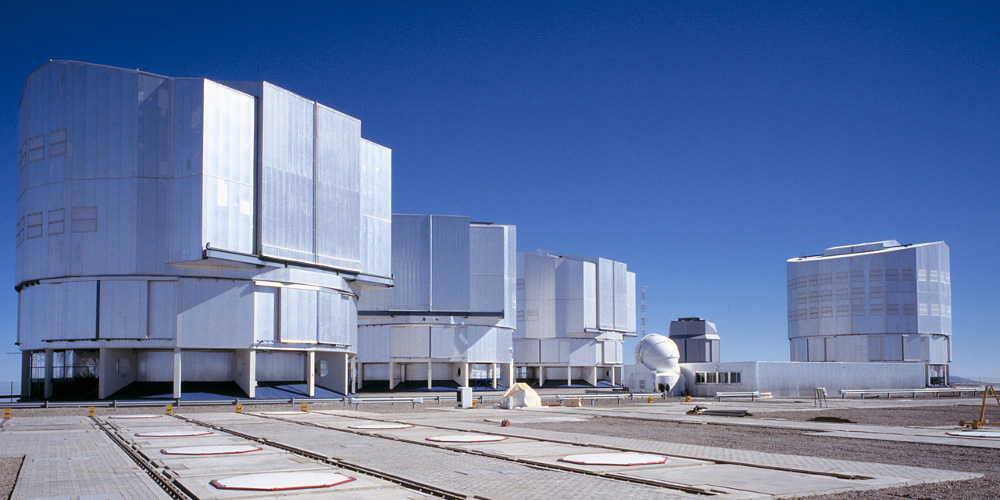 General view of the Paranal Observatory Platform with six domes. Credit: ESO
General view of the Paranal Observatory Platform with six domes. Credit: ESO
What’s special or unique about this project?
Martin Honzik: By no means can we claim to be the first to interlink art and science. We were among the early adopters, but this approach has since become very widespread. What most certainly is something special is the choice of the partner. ESO is at the forefront of basic scientific research in Europe. It is one of the leading edges worldwide, and we’re extremely proud to be able to establish this partnership. And, of course, it’s a tremendous compliment to us that this organization regard us as the right cultural partner.
But we’re proud not only of the scientific company we’re keeping but also of the intentionally diverse array of our cultural partners. What in my view essentially defines Europe – that we don’t all fit together perfectly; that this collaborative endeavor is endowed with value precisely by the diversity of its components – is reflected by this project. What is truly of value is simply the fact that there are so many microcosms – cultural cosmoses – in Europe. The challenge to Europe is to bring this to a level of identification so that we all believe in Europe. This is why we choose approaches that entail activities beyond the realm of art. The point of this is not to expand the dimensions of the world of art, but rather to endow these scientific facilities and the issues their staff members are dealing with for the benefit of Europe and all of humankind with the relevance they truly deserve, and also to give them the opportunity to be represented artistically in such a way that they can be understood by people in all walks of life.
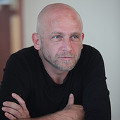
Martin Honzik is an artist and director of Ars Electronica’s Festival, Prix and Exhibitions divisions. He studied visual experimental design at Linz Art University (graduated in 2001) and completed the master’s program in culture & media management at the University of Linz and ICCM Salzburg (graduated in 2003). From 1998 to 2001, he was a member of the production team at the OK Center for Contemporary Art. In 2001, he joined the staff of the Ars Electronica Future Lab, where, until 2005, his responsibilities included exhibition design, art in architecture, interface design, event design and project management. Since 2006, Martin Honzik has been director of the Ars Electronica Festival and the Prix Ars Electronica and in charge of exhibitions in the Ars Electronica Center as well as Ars Electronica’s international exhibition projects. His recent achievements, in addition to numerous art projects (e.g. Ganz Linz, Vernichtungsaktion), include co-founding the u19 – CREATE YOUR WORLD festival for young people and serving as head of production and director of the 2012 voestalpine Klangwolke.

Claudia Schnugg studied business administration as well as media culture & theory. In 2010, she completed an interdisciplinary doctoral program at the University of Linz and Linz Art University, where her research focused primarily on getting artists and artistic processes established in private enterprises. In going about this, she analyzes business sectors and divisions from the perspective of art theory and the philosophy of art. Before joining the Ars Electronica Futurelab in April 2014, she was an assistant professor at the University of Linz working in the field of organization theory and organizational research focusing on sensual-aesthetic understanding and knowing. At the Ars Electronica Futurelab, she is in charge of supervising and developing the Ars Electronica Residency Network, and serves as liaison with the current artists-in-residence at the Ars Electronica Futurelab.
Find more information: ars.electronica.art/artandscience/en
Click here for the Open Call: artandscience.aec.at
This project has been funded with support from the European Commission. This publication (communication) reflects the views only oft he author, and the Commission cannot be held responsible for any use which may be made oft he information contained therein.
